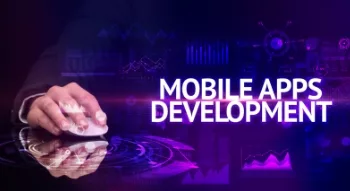You must already know the importance of eating three meals a day. But, did you know that AR (Augmented Reality) will one day be as essential as three meals in a day for us?
You may have had AR experiences before without the brands you use in your everyday life without even noticing it. For instance, it could be the filter for your pictures on your social media.
Augmented Reality is not that old. Since it is new, it’s easy to grab customers’ attention. People these days are intrigued to know about the impact of Augmented Reality.
Still wondering how Augmented Reality in marketing works and plays a vital role in marketing. You surely don’t have to worry about that. The following ten examples will make you look at the companies that are already using Augmented Reality in marketing in the most inspiring and creative way possible.
Home Depot
In 2015, Home Depot launched the project color app to assist customers with their concerns and confusion. This lets you view how your preferred paint color might appear in real life. You may assess whether a wooden table will look best for you by pointing the camera directly at the spot where you wish to put it.
If you don’t trust your own choices, you can upload pictures from the app on social media to acquire a friend’s opinion.
In 2017 Home Depot took things a step further. Now, you can use the app to see how items like garden furniture, faucets, and other products appear in your house.
Sephora
People don’t like purchasing makeup products online. It isn’t easy to figure out online which lip shade would compliment your personality.
Sephora carefully understands customers’ queries and concerns and offers virtual try-on by which the customers can see how the product will look exactly at them.
Sephora’s use of Augmented Reality is useful for its users. Augmented Reality isn’t just beneficial for users. Sephora’s usage of AR boosts sales by enticing the store’s tech-savvy customers and motivating them to act as brand ambassadors by documenting and sharing their Augmented Reality experiences online.
Social Media Filters
Social media is full of trendy filters. Social media filters are those AR features that users usually use in their life on their social media platforms – be it TikTok, Instagram, or Snapchat. With filters, you can just take your picture with the filter of your interest.
IKEA
Who doesn’t like the idea of frequent shopping without any uncertainty running over the mind? In this case, Augmented Reality has the solution for the people like these. Most of the time, consumers usually get confused about the color combinations or whether the purchase would complement the home ambiance.
Ikea understood the customer struggle and integrated Augmented Reality technology. You can just put your phone in the desired place you want to place your furniture, and the technology will then place the furniture virtually. Then can solely decide if it works best for you or not.
Gucci
Gucci was one of the first luxury brands that invest in Augmented Reality for marketing. Added an AR feature to Gucci’s app to let the customers use the feature to “try on” sneakers. This gave customers a visual representation of how their desired product will look in reality. This technology helped Gucci in boosting client satisfaction.
Timberland
If you are anything like me, you must already know the hassle of carrying piles of clothes to the changing rooms. Even most of the time, the idea of trying on clothes prevents me from buying clothes.
To avoid this trouble, Timberland took their customer satisfaction to the next level and set up a virtual changing room. So, you wouldn’t even have to walk into the store to try on the clothes. You can simply walk to a monitor which displays your avatar on the screen to let you know how it will appear.
L’Oreal
Buying beauty products without testing them is a big turnoff for beauty shoppers. To prevent beauty shoppers from inconvenience, L’Oreal integrated the brand’s makeup collection with the YouCam makeup app. The millennial generation is obsessed with exploring new shades and techniques. L’Oreal made it easy for them to try on makeup conveniently, even by sitting at home via their iPad.
L’Oreal stores provide services like having beauty consultants on hand to assist customers and digital features like the Nail Genius and Makeup Genius applications that are intended to enhance the consumer experience. Right now, the app is hosting 64 virtual beauty looks for their fans in Mexico, Russia, and the US.
Pokemon Go
Pokemon Go is one of the greatest examples of Augmented Reality. It was first initiated in 2016 and got popular within a few months. The idea was to develop a game that would incorporate both physical interaction and computer technologies. This game effectively mitigated the drawback that playing internet games makes individuals obese. Finding and catching a cartoon character that is practically existing in the environment is the game’s major objective. The characters in the game and the experience seem incredibly realistic.
Sayduck Furniture Visualizer
Sayduck also released a similar mobile app that helps users to conjure up how certain products would look in their homes. The AR app shows the items in real size by displaying a visual replica through the camera on a smart device. You can reshuffle the items to any angle and see how they would look in your home.
IBM app
Most consumers usually want to get product knowledge before making an in-store purchase. People usually like browsing on their smart devices for shopping. To cater to this customer need, IBM launched its AR app. The app acts like a personal shopper and uses Augmented Reality to give the customer a personalized experience and assist them with their confusion.
Wrapping Up
Augmented Reality is soon going to be one of the hottest trends in marketing. Various examples of Augmented Reality in marketing are used in the real world. Be it to generate more sales or to increase customer satisfaction, AR is something that all brands need to integrate into their businesses.
AR has the ability to enhance the user experience and make the business stand out. Marketers should know how these brands are already in AR and creatively incorporate trendy and latest marketing strategies into their business. Implementing Augmented Reality in marketing can do wonders for your business. The companies that are avoiding it are surely going to face major challenges and huge losses in the long run.



